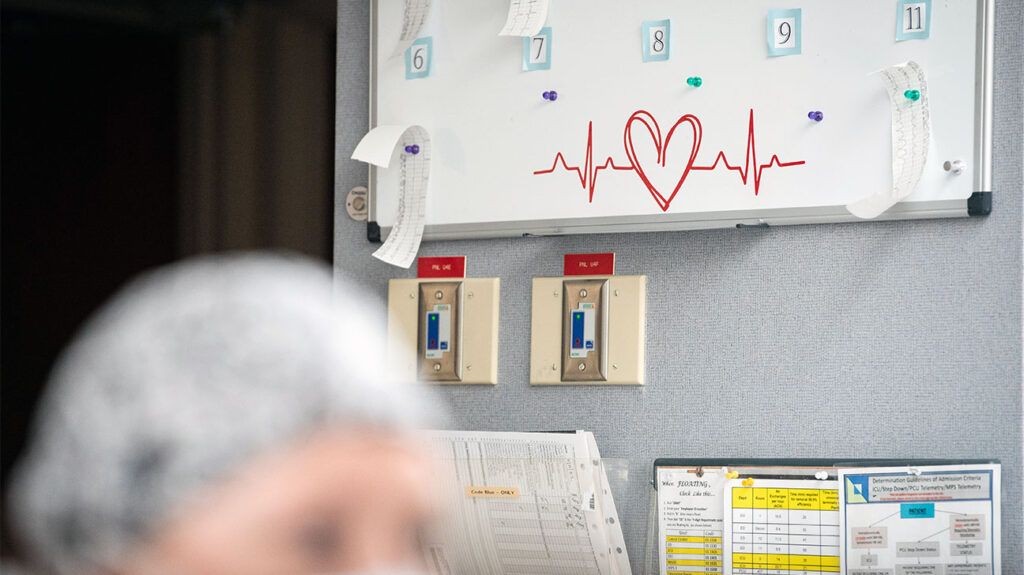
February marks
Heart disease remains the leading cause of death in the United States, with the Centers for Disease Control and Prevention
While regular doctor visits and a healthy lifestyle can help lessen the risk of heart disease, a number of new technological advances will give patients and doctors alike new tools to monitor and assess cardiovascular health.
“This is a huge field that will become commonplace in the future care of patients,” Dr. Cheng-Han Chen, a cardiologist and medical director of the Structural Heart Program at MemorialCare Saddleback Medical Center in California, told Medical News Today.
“We’re hopeful that we can start getting these technologies in clinical practice,” he added.
Here’s a look at five of the new technological advances for monitoring heart health.
Electrocardiography (or ECG or EKG) monitoring can offer brief, at-a-glance metrics on a person’s heart rate. In fact, if you’re wearing a smartwatch right now, you may already have this capability on your wrist.
One of the issues with wearable smart devices, though, is battery life. Continuous heart monitoring will inevitably run the power down, necessitating a recharge.
However, in the near future, this may not present a challenge.
Researchers in China are developing soft, wearable EKG devices – effectively a sensor with electrodes that can be taped directly onto the skin – that generate energy from the wearer’s movements. This means that the device will not need to be externally charged because the electrodes draw power from the body.
Dr. Shalini Prasad, a professor and department head for the Department of Bioengineering at the University of Texas Dallas, told Medical News Today that because multiple devices can be affixed to multiple areas of the body, they have the potential to be more accurate than a smartwatch.
“You can measure it just like you can with an Apple Watch, but with the more points you have, the more accurate it becomes,” she explained. “So right now they’re trying to figure out ways and strategies to do that.”
Test strips are nothing new, as they’ve been used for glucose meters, urine tests, and various other applications for decades.
A new type of test strip, presented as a proof-of-concept, could be a game-changer when it comes to assessing heart health.
Researchers say they have developed paper strips to measure blood serum, which can give readings on three known markers of heart failure.
The straightforward test could yield results in about half an hour and a specialized reader can feed these results directly into a smartphone.
Placing a sensor inside the body can offer important information on a person’s heart health or their recovery after surgery.
However, these inorganic devices need to be removed most of the time, necessitating invasive follow-up surgery.
A new generation of implants that can measure lactic acid, volatile organic compounds, pH balance, and pressure, could provide some of these same insights – all without needing to be taken out.
“After heart surgery, monitoring recovery is going to be very important,” said Prasad. “So how can you do that inside the body? These sensors are biocompatible and break down, so they can simply dissolve without another surgery. This could open the door to patients not needing to go back to the hospital or doctor every week but having technologies that allow for cardiac health monitoring off-site.”
Heart stents are an invaluable tool for treating people with heart disease.
The principle is simple: the stents are essentially tubes that are placed in the coronary arteries to keep them open and help facilitate blood flow to the heart.
However, traditional stents come with a few caveats.
While they’re designed to be permanent, they can narrow over time and become less effective. They can also be prone to various complications. Finally, while they work on a mechanical level, they don’t offer data on how they’re holding up.
Various researchers have been working on a way to make stents more reliable and durable, which could give doctors insights into various risk factors within the stent before they become a bigger problem down the road.
Some of the more intriguing research proposes a self-reporting stent that provides more data than earlier “smart” stents, thanks to a larger inductor coil and external antenna. This method would detect whether the blood is flowing as expected.
“Technologies like this, with the ability to monitor things in a relatively non-invasive manner, can port data through the internet and other frameworks, allowing for telemedicine to monitor the health of patients,” Prasad said. “That’s where you’re going to see cardiovascular disease impacted by this type of technology.”
Blood tests can reveal a lot about a person.
In fact, new research has shown that biomarkers in the blood could help assess a person’s brain health after they go through a cardiac event.
Testing on mice shows that immune cells in the blood could indicate whether the brain is inflamed or injured after cardiac arrest.
This means that someday, doctors could be able to better predict – and improve – the brain’s recovery after a cardiac event – all with a simple blood test.
It’s safe to say that doctors have more diagnostic tools today than ever before – and thanks to emerging medical advances, the accuracy will only continue to improve.
Chen said that any sensor that provides continuous information can be more helpful than a journal or self-assessment.
“Without these types of long-term continuous monitoring, we wouldn’t be able to diagnose a lot of the hard problems that we need to,” he said. “For instance, a patient might tell their doctor that they’re having symptoms every few days. With a monitor, a patient can take it home and wear it, and this gives us continuous information that we otherwise wouldn’t have. They’re very essential in the diagnosis of a lot of conditions.”
